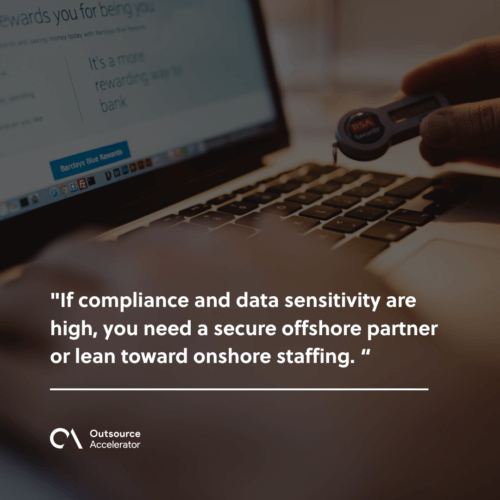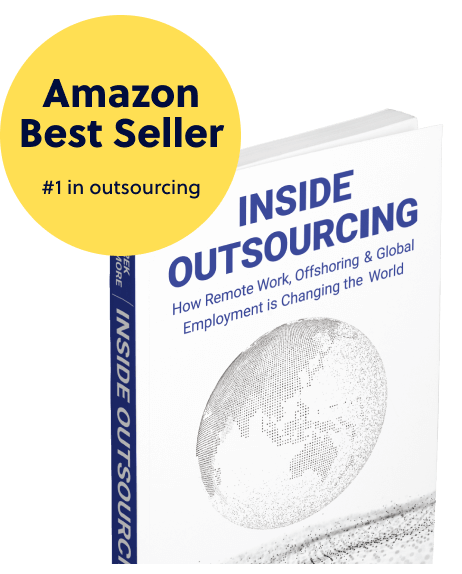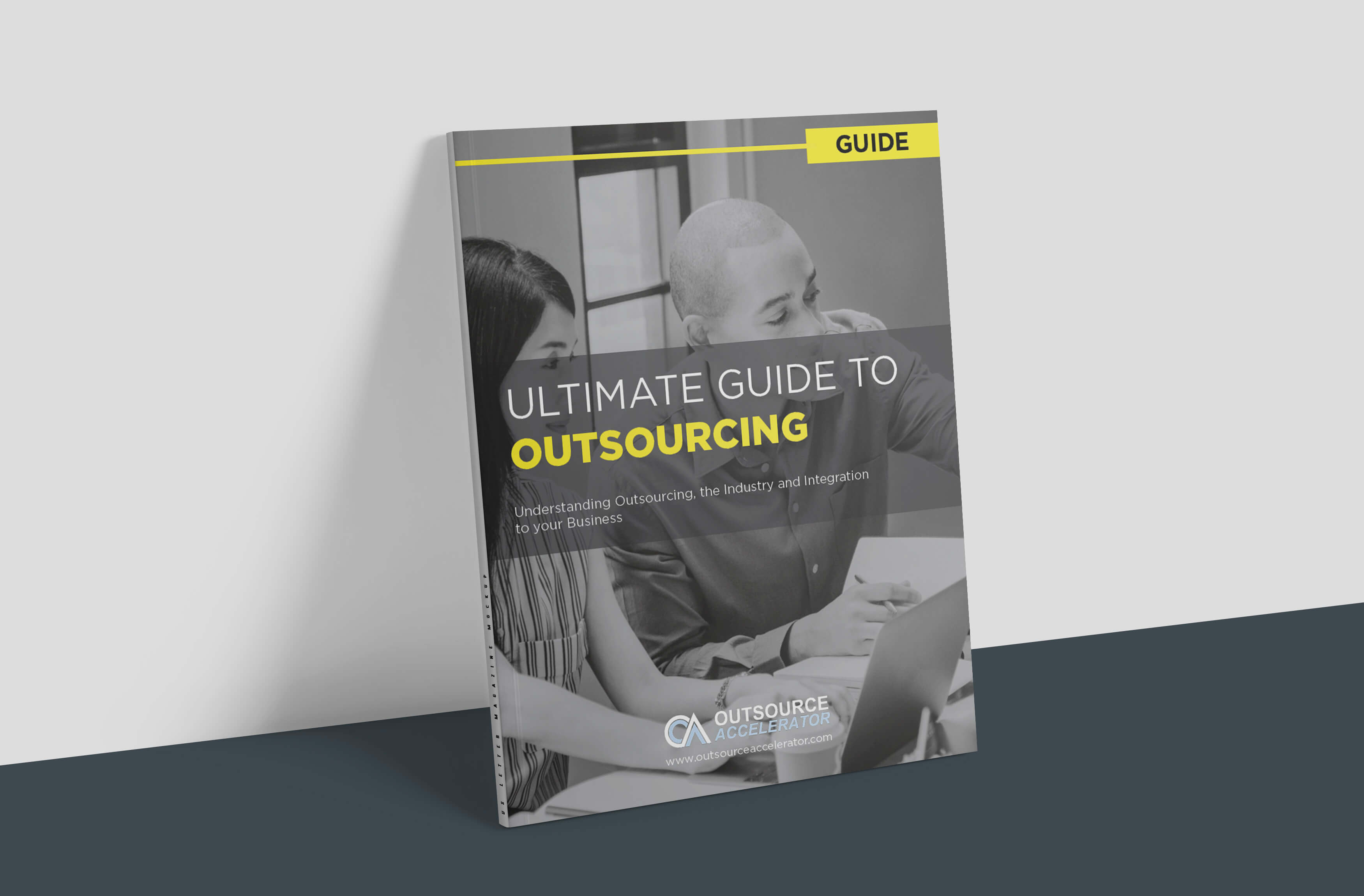Offshore vs. onshore staffing: What’s better for your growth strategy?

When building a team to scale, one of the most strategic decisions a business can make is choosing between offshore vs. onshore staffing. Each model offers distinct advantages—and drawbacks.
As more companies embrace hybrid and remote workforces, evaluating both options with a critical eye becomes essential to long-term growth.
This article lays out the general setup of both to help you decide what can work best for your needs.
What is offshore staffing?
Offshore staffing involves hiring talent from other countries. These regions, typically like Southeast Asia or Latin America, often have lower labor costs and readily available skilled professionals.
Unlike outsourcing—which often hands over projects to third-party firms—offshore staffing allows companies to build dedicated teams under their direct supervision and brand.
It enables organizations to tap into global talent and integrate offshore employees, retaining operational control and aligning with company culture. Offshore staffing is particularly beneficial for businesses seeking cost efficiency, round-the-clock operations, or hard-to-find skills.
However, offshore staffing isn’t without risks—especially when handled through unmanaged freelancers or loosely structured contracts. Unsecured devices, lack of compliance, and data protection issues can expose businesses to legal and financial vulnerabilities.

What is onshore staffing?
Onshore staffing refers to hiring employees within your home country or the same geographic region. It provides proximity, cultural familiarity, and often smoother communication.
This approach is particularly attractive for roles requiring direct oversight, in-person collaboration, or local regulatory expertise.
However, relying solely on offshore staffing presents inherent limitations. Companies face higher labor costs, including salaries, benefits, and significant overheads.
The average recruiting cost per hire in the US is around $4,700 and can run higher depending on factors like industry and experience. As Training’s 2024 Industry Report also shows, a large part of the budget goes into training, with expenditures reaching $98 billion after hitting its peak of $101.8 billion the previous year.
Local talent pools can be limited, and recruiting in saturated markets may cause delays in time-to-hire. This can also increase salary demands, making it difficult for growing companies to scale quickly and affordably.
Key differences between offshore and onshore staffing
Here’s a brief rundown of their differences:
Cost and scalability
Offshore staffing generally reduces overhead, allowing businesses to scale faster without sacrificing quality. Onshore staffing, while offering consistency, comes at a higher cost and with slower scaling potential.
Talent availability
Offshore markets give access to specialized talent, especially in tech, design, and customer support. Onshore hiring is restricted to local candidates, which can hinder diversity and innovation.
Compliance and risk
Without the right partner, offshore staffing can introduce compliance risks, particularly with data security and labor laws. Onshore teams face fewer compliance challenges but often lack the cost advantage and flexibility.
Communication and time zones
Onshore staffing supports synchronous collaboration. Offshore teams, especially with the right tools and processes, can operate across time zones to maintain 24/7 productivity.
Security and infrastructure
Freelance-based offshore solutions pose significant cybersecurity threats, such as data breaches and intellectual property theft. This is where managed offshore staffing solutions like DOXA® Talent become essential.
Choosing what’s right for your growth strategy
Your decision between offshore vs. onshore staffing should depend on your strategic goals:
- If speed and cost-efficiency are priorities, offshore staffing allows faster scaling at lower expense.
- If compliance and data sensitivity are high, you need a secure offshore partner or lean toward onshore staffing.
- If your industry needs niche or scarce skills, offshore markets can help you find the expertise unavailable locally.
- If real-time collaboration is essential, a hybrid model (blending offshore and onshore) may offer the best balance.
Ultimately, the goal isn’t just to save money or hire quickly—it’s to build a stable, productive workforce aligned with your company’s values and long-term vision.

How DOXA® Talent supports your staffing strategy
DOXA® Talent delivers secure, fully managed offshore staffing tailored to U.S. businesses seeking growth without compromise. Their model eliminates the risks of hiring freelancers by offering dedicated teams equipped with DOXA-issued laptops, full operational support, and 24/7 IT oversight.
With DOXA® Talent, you get:
- Enterprise-grade security: All devices feature MFA, encryption, and remote wipe capabilities. External storage is restricted and monitored. Further, the company is SOC Type 1 Certified.
- Global compliance: DOXA adheres to U.S., Philippine, and Colombian labor and data protection regulations.
- Fully managed teams: Every staff member is a full-time employee under DOXA’s employer-of-record model, reducing your legal burden.
- Integrated IT and HR support: From onboarding to performance monitoring, DOXA handles everything so your team stays focused on growth.
- Flexible scaling: Whether you need one expert or a full department, DOXA builds teams that grow with your business.
Your growth strategy deserves more than a quick fix. With DOXA® Talent, you gain a strategic partner that helps you scale securely, compliantly, and confidently.
Ready to build a smarter workforce? Contact DOXA to learn how its secure offshore staffing solutions can drive your business forward.







 Independent
Independent




